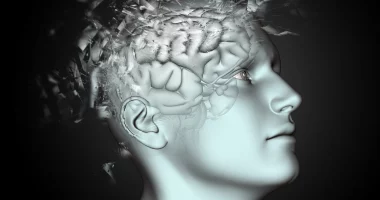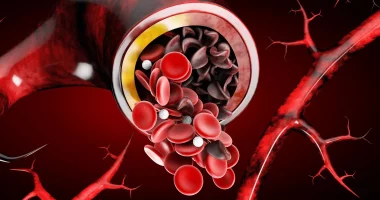Idiopathic intracranial hypertension is a condition where there is high pressure inside the skull, leading to headaches and vision issues. “Idiopathic” means the cause is unknown, “intracranial” means inside the skull, and high blood pressure (hypertension).
IIH, also called primary intracranial hypertension or pseudotumor cerebri, happens when there is too much cerebrospinal fluid (CSF) in the brain. This extra fluid increases the pressure internal side of the skull, causing frequent or severe headaches and sometimes temporary vision loss. Although IIH is not life-threatening, if it is not treated, it can lead to permanent loss of vision.
Every year, about 7.8 out of 100,000 people are diagnosed with IIH. The number of cases is rising, mainly because more people are becoming obese, which is a risk factor for this condition.
Symptoms
Individuals with IIH typically show signs of elevated cerebrospinal fluid pressure over the brain. Many people experience continuous and serious headache episodes, often accompanied by nausea and vomiting. Other common symptoms include vision changes, such as loss of side vision, double vision, and blind spots. Additionally, patients might suffer from shoulder and neck pain, and tinnitus.
One significant result of the increased intracranial pressure is on the optic nerve, known as papilledema. This condition, which usually impacts symmetrically both eyes, is a common indicator that supports the diagnosis of IIH. The chance of vision loss from papilledema depends on how severe it is.
Many individuals with IIH might only identify or experience loss of visual field at later stages. Once vision is lost due to IIH, it is unlikely to be regained, even if the ICP is managed.
Another frequent symptom of IIH is transient visual obscurations, which are temporary events of blurry vision coming by recovery. These episodes can affect one or two eyes and are indicative of the fluctuating nature of vision problems in IIH patients.
Causes and Risk Factors
The exact cause of idiopathic intracranial hypertension is unknown, which is why it is called “idiopathic.” This means that health experts do not have a clear explanation for why it happens. Some healthcare providers believe that increased intracranial pressure in IIH could be due to either too much production or not enough absorption of cerebrospinal fluid.
When healthcare providers can identify a specific cause of increased ICP, like stroke, brain tumor, blood clot, or particular medications, they diagnose the condition as secondary intracranial hypertension instead of IIH.
IIH can attack anyone, but it is around 20 times more frequent in women of childbearing age who are more than 20 percent over the suggested weight for their height. This statistic leads healthcare providers to suspect that hormones might play a role. While men and children can also develop IIH, it happens much less frequently in these groups.
Diagnosis
To diagnose IIH, a healthcare provider will conduct several tests, often involving both an ophthalmologist and a neurologist, who specialize in eye health and the nervous system.
First, an ophthalmologist will perform an eye exam to assess the health of the eyes and examine the back of the eye. They may also conduct a visual field exam to test peripheral vision.
A neurologist will then perform various tests to eliminate other possible causes for the symptoms. These tests may include a physical test and imaging tests, like MRI or CT scans, to examine the structure of the eyes and the ventricles in the brain. Additionally, a spinal tap may be performed to check CSF pressure and check for increased intracranial pressure.
Treatments
For many individuals with IIH, signs improve with proper treatment. The main goals are to alleviate symptoms, reduce intracranial pressure, and protect vision.
Dietary and Lifestyle Modifications
The initial intervention usually involves lifestyle and dietary changes. These modifications can help individuals with obesity lose weight, which can decrease IIH symptoms or prevent the condition from occurring again after treatment. Healthcare providers will provide guidance on how to achieve and maintain a healthy weight.
Medications
Healthcare providers may prescribe various medications to manage IIH. These drugs primarily aim to decrease CSF buildup and alleviate headache episodes. Commonly prescribed medications involve acetazolamide, furosemide, methazolamide, and topiramate.
Lumbar Puncture
It is a procedure used to check CSF pressure and can also alleviate some symptoms. It involves putting a needle into the spine to collect cerebrospinal fluid. By analyzing changes in the CSF, healthcare providers can suggest correct medicines or even surgery if necessary.
Surgery
If medications and lumbar punctures do not effectively reduce symptoms, surgery may be required to relieve pressure. Two common surgical options are optic nerve fenestration and neurosurgical shunt implantation.
- Optic Nerve Fenestration: In this procedure, a small opening is made in the sheath surrounding the optic nerve to alleviate swelling. This can assist preserve vision but usually doesn’t decrease headaches.
- Neurosurgical Shunt: A thin tube is implanted into the spine or brain to drain excess CSF into other parts of the body. This procedure can assist save vision and decrease headache events, but it carries chances of complications like blockages and infections.
When to Contact a Healthcare provider
Although IIH is an uncommon condition, it is important to meet a healthcare provider if you experience frequent and serious headaches along with changes in your vision, like double vision or temporary vision loss.
If you are a woman between the ages of 20 to 50 or if you have obesity, you are at a higher chance for IIH. If you fall into these categories and experience these signs, you should see a healthcare provider as soon as possible. Early diagnosis and treatment can help manage the condition and prevent potential complications, like permanent loss of vision.
Summary
Idiopathic intracranial hypertension is a condition where increased cerebrospinal fluid pressure in the skull causes severe headaches and vision issues. It primarily affects overweight women of childbearing age, though it can occur in others. Diagnosis involves eye exams, brain imaging, and spinal taps.
Treatment includes lifestyle changes, medications, lumbar punctures, and sometimes surgery to relieve pressure and protect vision. Prompt medical attention is crucial for those experiencing frequent headaches and vision changes, especially if they are at higher risk. Early intervention can help manage symptoms and prevent complications.









